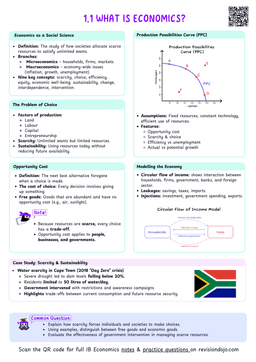- Economic growth is a key macroeconomic objective that must be balanced with other goals.
- While high growth brings many benefits, it can also create conflicts with other economic objectives.
High economic growth is typically defined as rates above the long-term average: about 2–3% for developed economies and 5–6% for developing economies.
High Economic Growth and Low Inflation
The relationship between growth and inflation is one of the most critical trade-offs in macroeconomic management, often creating potential policy conflicts.
- Rapid economic growth can lead to demand-pull inflation when:
- Aggregate demand grows faster than productive capacity
- The economy operates near full capacity
- Cost-push inflation may also arise due to:
- Resource constraints and bottlenecks
- Rising wages from increased labour demand
- China’s rapid growth in the 2000s averaged 10% annually, but was accompanied by inflation peaks of 8% in 2008 and 6.5% in 2011.
- This highlights the challenge of maintaining price stability during periods of high growth.
Policy measures to maintain price stability while pursuing growth include:
- Supply-side policies to expand productive capacity
- Careful monetary policy calibration
- Structural reforms to reduce bottlenecks
High Economic Growth and Environmental Sustainability
- Economic growth often relies on increased production, which can harm the environment through pollution, resource depletion, and habitat destruction.
- This raises questions about the sustainability of growth.


